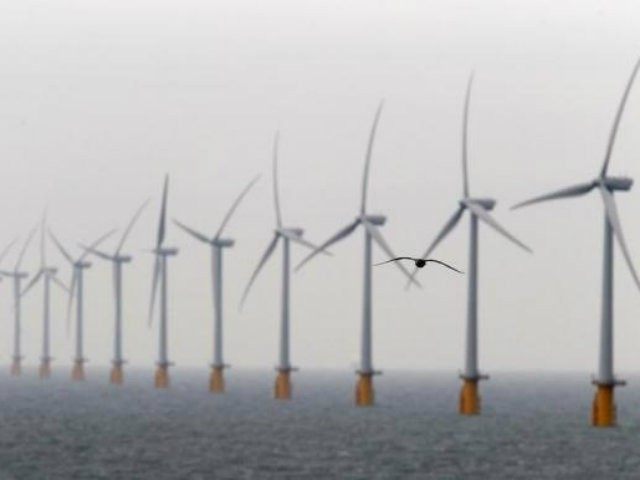Work on a 116 turbine offshore wind farm located in the English Channel will begin next year, it has been announced. The Rampion wind farm situated just eight miles from the picturesque Sussex coast will cost £1.3 bn to construct.
Supporters claim that the wind farm will generate 400 megawatts, powering up to 300,000 homes and cutting up to 60,000 tons of CO2 a year, although previous studies have shown that the chances of wind farms operating at maximum capacity are “vanishingly small”. Most operate at about 8 per cent of headline output on average.
E.ON, the company behind Rampion, have said that construction of the onshore substation at Twineham, West Sussex will start next month, followed by preparations for the onshore cable route. The offshore elements are expected to be complete by 2018, according to the Guardian.
Tony Cocker, the E.ON chief executive, said: “This is an important milestone for what is a strategically important project for the UK.” E.ON is being partnered in the project by the Green Investment Bank, which has also welcomed the forthcoming work on the project.
Energy Secretary Amber Rudd said: “This huge investment is a vote of confidence in the UK, creating local jobs, bringing business opportunities and providing clean, homegrown energy.”
And Alasdair Cameron, a renewable energy campaigner with Friends of the Earth, said: “This is positive news. Offshore wind is a once in a generation opportunity for the UK, providing jobs, cutting emissions and boosting our energy security.
“It’s great to see the Green Investment Bank backing wind power, but there is a real risk that without renewed government support, and a timetable beyond 2020, investment could dry up. Germany is already poised to overtake the UK as the largest offshore wind market.
“Costs are falling rapidly in offshore wind, but if we want to get the most out of this crucial, clean energy source, ministers must show real ambition.
“At the same time the government should rethink its proposed ban on onshore wind. It makes no sense to attack one of the cheapest and most popular forms of energy while ploughing ahead with fracking in the face of local opposition.”
However, not everyone is applauding. It was opposed by both the National Trust and South Downs National Park Authority (SDNPA), calling on then-Energy secretary Ed Davey to oppose the plans.
Last July, Trevor Beattie, chief executive of the SDNPA told The Telegraph: “There will be 14km of cable going straight through the rare chalk grassland of the National Park. It is a rarer habitat than Amazon rainforest.”
Mr Beattie said that the 30 metre wide corridor being dug up, which includes a 12 metre trench with vehicle access alongside, would leave “a big scar on the landscape” and disrupt a number of rare species, including the Duke of Burgundy butterfly.
Similarly, the National Trust wrote to the planning inspectorate to inform them “We do not support proposals that would seriously damage the beauty of our coastline.” Jane Cecil, National Trust general manager for South Downs, said the Trust was concerned about the “major potential impact of the proposals on Birling Gap, Seven Sisters and the Heritage Coast within the National Park”.
Davey pushed the plans through, citing the “urgent national need for such projects”. He said that there was a “compelling case” for the plans because the energy harnessed by the wind turbines more than outweighed any “potential adverse local impacts.”

COMMENTS
Please let us know if you're having issues with commenting.